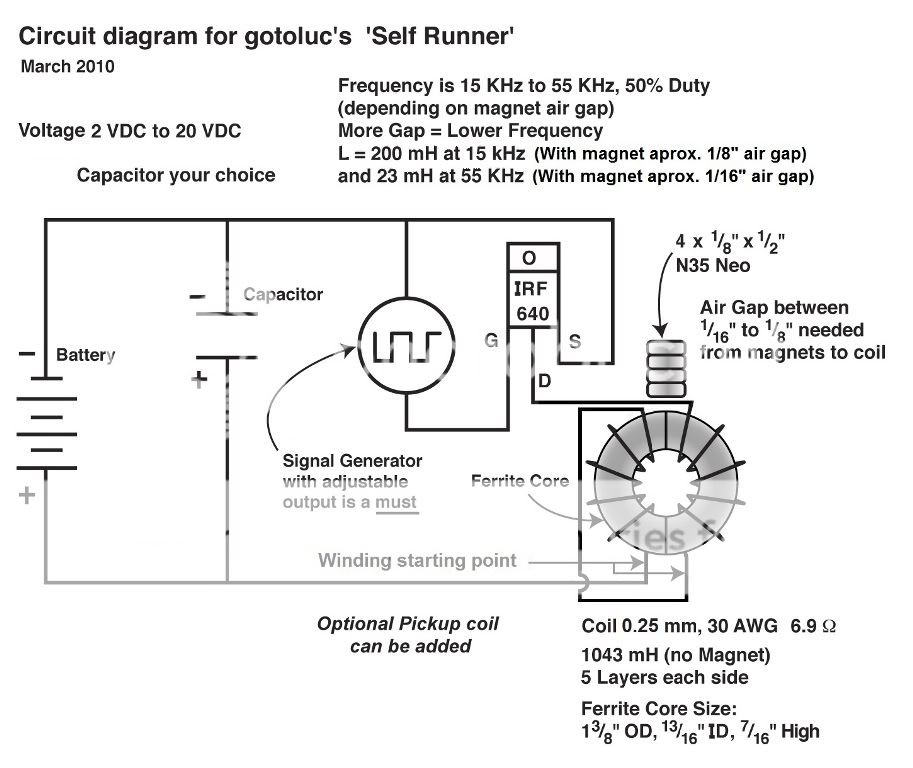Hi everyone,
I have a new effect involving a ferrite toroid coil which is being pulsed at a very specific frequency, duty cycle and uses a permanent magnet with an air gap.
It seems to be self running once started and the source battery can be disconnected and the capacitor will maintain its charge and in fact gain energy.
I found this effect over a week ago and since then in my spare time have been trying to find what I could be overlooking. So far I have not found anything, so I invite anyone to comment as to what I may of missed.
The video demo: YouTube - Self Running Coil test 1
If the magnet is removed there is no effect
If the magnet has no air gap there is no effect
If the frequency is changed there is no effect
If I leave the battery connected it does not drain in voltage and actually seems to be charging the battery.
I have changed the mosfet with the same IRF640 and it is the same. I tried it with IRF840 and it works but not quite as good as the IRF640
The effect only seems to work at low voltage 2.80vdc is about the highest I got it to go so far.
Please feel free to share you comments or concerns.
Luc
Here is the up to date circuit at this time:

I have a new effect involving a ferrite toroid coil which is being pulsed at a very specific frequency, duty cycle and uses a permanent magnet with an air gap.
It seems to be self running once started and the source battery can be disconnected and the capacitor will maintain its charge and in fact gain energy.
I found this effect over a week ago and since then in my spare time have been trying to find what I could be overlooking. So far I have not found anything, so I invite anyone to comment as to what I may of missed.
The video demo: YouTube - Self Running Coil test 1
If the magnet is removed there is no effect
If the magnet has no air gap there is no effect
If the frequency is changed there is no effect
If I leave the battery connected it does not drain in voltage and actually seems to be charging the battery.
I have changed the mosfet with the same IRF640 and it is the same. I tried it with IRF840 and it works but not quite as good as the IRF640
The effect only seems to work at low voltage 2.80vdc is about the highest I got it to go so far.
Please feel free to share you comments or concerns.
Luc
Here is the up to date circuit at this time:





 ... I only remove the magnet from the toroid coil and it starts to use current, so how can the energy that was going back to the source of been coming from the MOSFET gate pulse and now suddenly stop
... I only remove the magnet from the toroid coil and it starts to use current, so how can the energy that was going back to the source of been coming from the MOSFET gate pulse and now suddenly stop
Comment